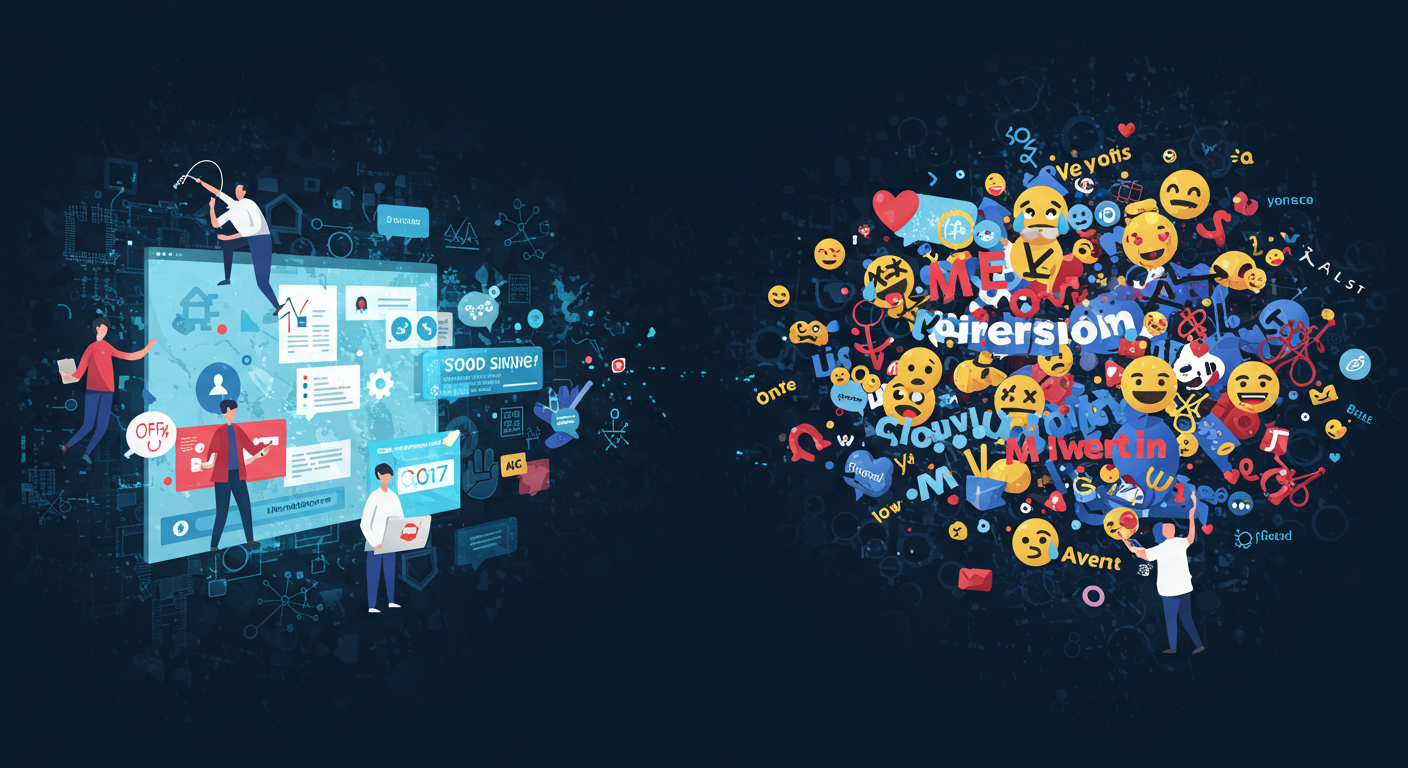In 2025, brands will not only sell items; they will also shape culture, discourse, and meaning. Language plays a vital role in this effect. However, language has changed significantly over time. It’s now political, emotional, generational, and more polarizing than before.
We now live in a time of “language wars,” where a single word can either bring people together or divide them. The tone of a tweet can instantly make people like or dislike you. Due to these rapid changes, marketers must reconsider the words they use, the tone they project, and the image they convey.
The New Semiotics of Advertising
There is no longer a neutral word. Today, images, online slang, acronyms, and daily words all carry multiple meanings. These meanings vary based on who hears them.
Consider a term like “authentic.” For some, it means revealing sensitive stories. Others consider it overdone marketing jargon. The term “girlboss,” once seen as uplifting, now carries sarcastic or even derogatory connotations in certain groups. Similarly, “woke” is praise in one social media feed but an insult in another.
Furthermore, Gen Z and Millennials have different ideas about even emojis, such as the crying face. This clearly shows that language changes not only in speaking but also visually. Now, brands have to figure out all of this in real-time.
Case Studies: When Language Gets Loud
Some brands manage things right. Who else? Not really.
Dove’s Real Beauty ad used inclusive language that appealed to many people. However, it faced criticism in other parts of the world for going beyond local beauty standards.
Gen Z and meme culture love Spotify Wrapped. This is due to its highly personalized, casual, and jumbled language, which sounds like a friend wrote it.
Gillette’s “The Best a Man Can Be” advertisement took a firm stand on masculinity and societal change. It divided viewers; some praised its boldness, while others dismissed it as useless virtue signaling.
Apple, Nike, and Netflix, on the other hand, have mastered tone. Their communication is always current, rarely reactive, and consistently aligns with their brand identity.
READ ALSO: Your audience has a filter for BS
The Algorithm is Listening Too
Interestingly, computers are also translating your language. Social networks use AI to monitor the words people use. They screen “sensitive” content and adjust reach as needed. So, even the most creative ads can lose out on exposure because of language cues that AI doesn’t fully understand.
In a more subtle way, platforms favor material that feels natural, relevant, and not copycat. Copy that sounds robotic and is full of buzzwords often gets lost in translation. In a world where participation is valuable, language is more than just conversation.
What This Means for Advertisers
So, how do brands stay alive and grow in this war of language?
First, put cultural knowledge first. Do more than just translate words. Understand the subtleties. Ensure you truly grasp what your audience is saying and hearing.
Next, write copy like you would strategize. The best creative groups know that words are not just fluff. They represent a distillation of character, purpose, and impact.
Furthermore, assemble diverse teams. The people who write, review, and plan your campaigns should reflect the audience you want to reach.
Also, feel the tone as well as the style. You conduct A/B tests on images; now, do it with your words. What doesn’t sound right? What stays?
Finally, balance consistency and usefulness. You don’t have to be loud to be understood. You just need to be clear, on-brand, and purposeful.
Speak With Care, Speak With Clarity
In this era of language warfare, quiet is not a haven, and yelling is not a strategy. Brands that realize every word has meaning, every tone tells a narrative, and every caption offers a chance to connect, or disengage, will win. Advertising is still about storytelling. But what about the words used in that story? That is where the actual conflict exists.
ALSO WATCH: MARKETING EDGE ONTV









Comment
No comments found.